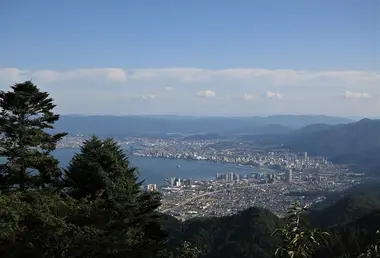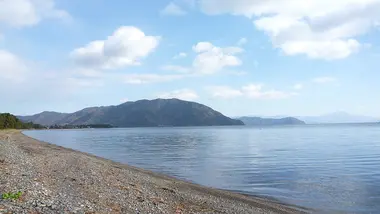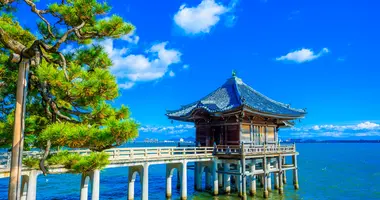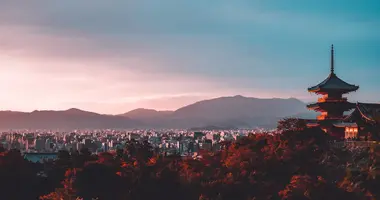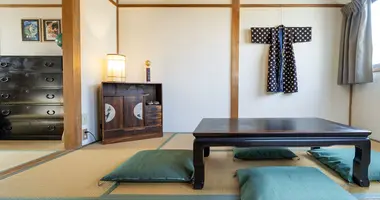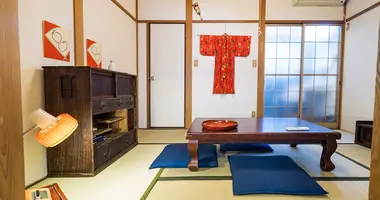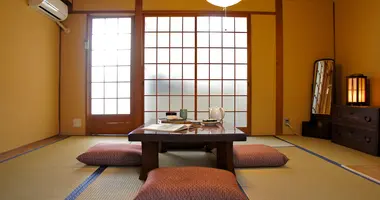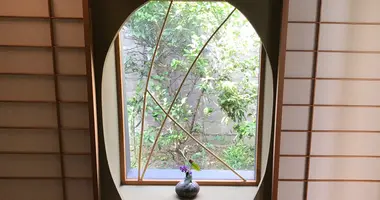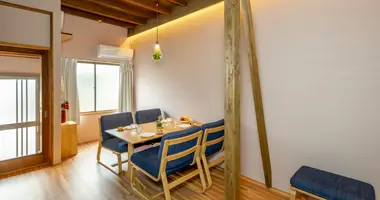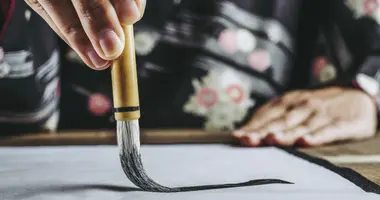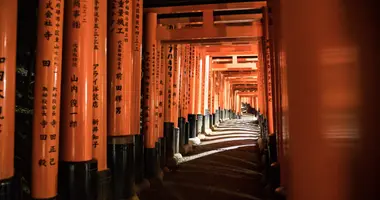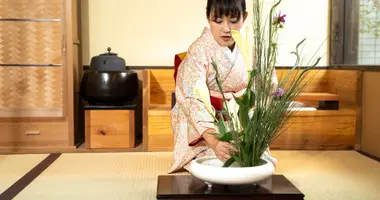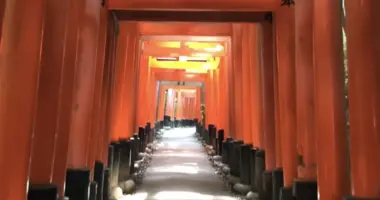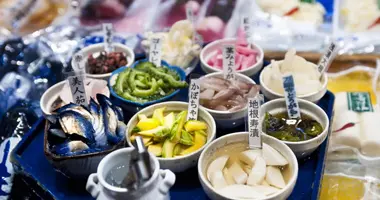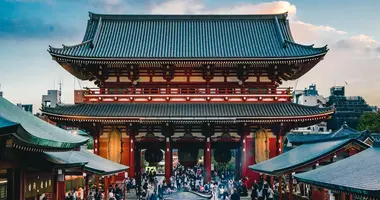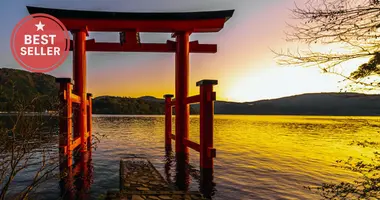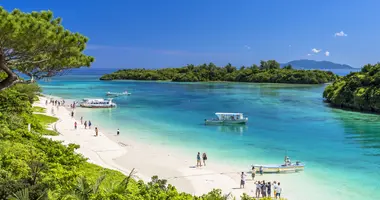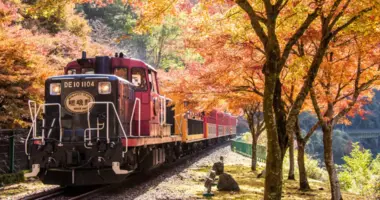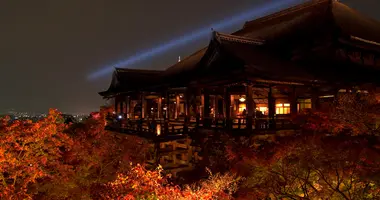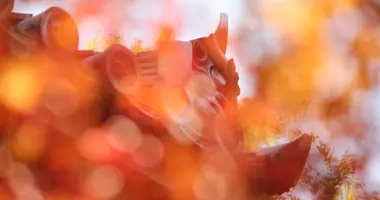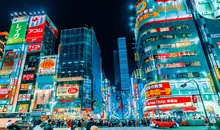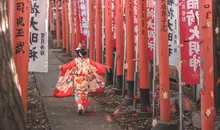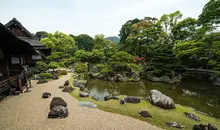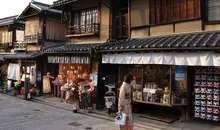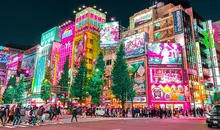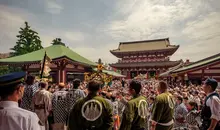Lake Biwa-Japan's largest lake located in the heart of Kansai
- Published on : 20/11/2025
- by : Joshua
- Youtube
A Kyoto Escape
Lake Biwa (琵琶湖) is located entirely in Shiga Prefecture and is the largest freshwater lake in all of Japan. It is a center for not just nature but culture and history as well. Nearby Kyoto, it is a great day trip for visitors to the ancient capital and is host to some of the most beautiful views found on the Japanese archipelago.
Read on to learn more about this geographic landmark of Japan and the best ways to spend your time there for your next trip to Japan!
History and Geography of Lake Biwa
The lake covers around 670 square kilometers (259 square miles) of surface area with a number of small rivers draining into it, and it stands as one of the most prominent geographical features in the Kansai region. It provides the region with much of its drinking water.
Lake Biwa, despite being located fully in Shiga Prefecture, is located very nearby Kyoto City, the former capital of Japan up until the Meiji Restoration. In fact, getting to Otsu Station, near the southern section of the lake, only takes around 10 minutes from Kyoto Station. It is a popular day trip and getaway for residents and visitors to the city.
The Seta River is the lake's primary outlet, which flows into a number of other different rivers before flowing into the Seto Inland Sea at Osaka Bay. In total, there are 118 rivers that flow in and out of the lake.
With an average depth of 41 m (135 ft) and a max depth of 104 m (341 ft), the lake is home to a prolific ecosystem, with many freshwater fish like trout and sweetfish. There is also a substantial pearl-cultivation network coming out of the lake.
Lake Biwa is one of the oldest lakes in human history, and its role in the development of early Japanese civilization is noteworthy. Archaeological finds in and around the lake are indicative of the prehistoric Jomon period, with Lake Biwa being a significant source for food and water.
What to do at Lake Biwa
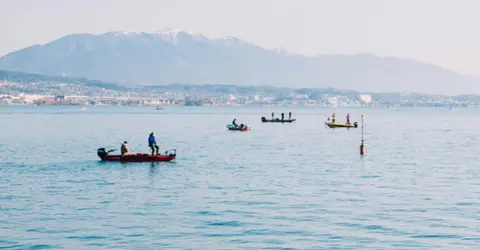
Lake Biwa, Shiga
takeshi Yu, Unsplash
Lake Biwa provides a wide variety of activities that highlight its rich cultural heritage and natural beauty. The well-kept Biwaichi route, a picturesque 200-kilometer loop that circles the lake, is a great place for outdoor enthusiasts to go kayaking, paddleboarding, or cycling.
Birdwatchers visit the wetlands and river mouths where migratory species congregate. The lake is the perfect location for photographers and environment enthusiasts looking for serene, open views because of its serene waters and striking mountain backdrop.
The local cuisine, particularly freshwater fish dishes like funazushi or grilled ayu, adds another dimension to the experience, and nearby hot springs provide a soothing way to cap off the day. When combined, these pursuits provide a destination that combines culture, nature, and leisurely exploration at Lake Biwa.
Beaches of Lake Biwa
In summer, swimmers swarm to the western shore's white sand beaches.
Notable beaches include the following:
- Omi-maiko beach
Omi-maiko beach is a popular destination for families and groups of friends from the area seeking some fresh air during the oppressive Japanese summer because of its four kilometers of white sand. It is surrounded by a pine forest that offers pleasant shade and little stores where you may purchase food.
It takes 45 minutes to travel directly from Kyoto Station on the JR Kosei Line.
- Makino Sunny Beach
Makino Sunny Beach is located all the way on the northern end of Lake Biwa. Also great for families, there are great locations for barbequing on the beach. This is also a popular location for camping during the warmer months!
Located near Makino Station on the Kosei Line, taking a little over 1 hour from Kyoto Station.
- Omi-shirahama beach
Omi-shirahama beach is wider than other nearby beaches, giving sunbathers more room. The beach's shallow, crystal-clear water is perfect for swimming, especially for kids.
It is near Omi-takashima Station, about 1 hour away from Kyoto Station.
The two main islands of Lake Biwa

Okishima Islanda
@At by At on Wikimedia, CC BY-SA 3.0
Lake Biwa welcomes visitors to discover its distinctive shoreline communities and rich history. For a sense of local folklore and preserved cultural landscapes, visitors can enjoy boat rides to the islands of Chikubu and Okishima.
- Okishima (沖島)
The island, which is home to a tight-knit fishing village, is well-known for its peaceful alleys, classic wooden homes, and the soft sound of boats entering and leaving the harbor. Okishima, an intimate setting where the lake's changing seasons become a part of everyday life, feels suspended in time due to its lack of automobiles and small population.
- Chikubu Island (竹生島)
Situated in the northern part of the lake, Chikubu, the second largest island on Lake Biwa, is a small island with historical and spiritual significance. Known for its Tsukubusuma Shrine and Hogonji Temple, it is a significant pilgrimage site.
Shirahige Shrine
One of the most famous sites in Shiga Prefecture is Shirahige Shrine, which is situated on the western bank of Lake Biwa. The shrine, which is devoted to longevity and good fortune and is well-known for its eye-catching red torii gate that stands in the water, attracts people who come to pray, snap pictures, and take in the relaxing lakeside setting.
One of the most breathtaking vistas of Lake Biwa is created by the torii at daybreak, when it outlines the horizon in gentle light. This scene often calls for Shirahige Shrine to be labeled as an alternative to Miyajima in Hiroshima; however, its charm and significance to the region make it a worthwhile destination on its own.
Getting to the shrine is most easily done by car; however, it is around a 20-minute walk away from Omi-Takashima Station.
Lake Biwa Canal Cruises
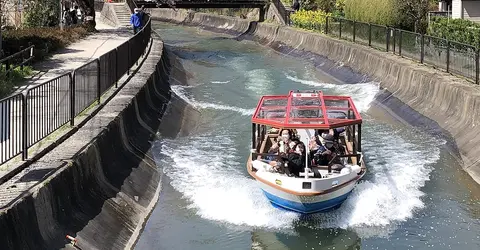
Lake Biwa Canal Cruise
@Aw1805 on Wikimedia, CC BY-SA 4.0
A historic waterway from the Meiji period, the Lake Biwa Canal was constructed to transport water from Lake Biwa to Kyoto, aiding in the city's revitalization after it lost its status as Japan's capital. It was finished in 1890 and consists of tunnels, aqueducts, and channels that provided power, transportation, drinking water, and irrigation. In addition to being an essential piece of infrastructure, the canal is now regarded as a scenic landmark, particularly in the spring and fall.
Cruises on the Lake Biwa Canal offer a serene and nostalgic way to experience one of Japan's most historic waterways. Seasonal boats-often small, low-profile wooden vessels-carry passengers through the narrow canal between Otsu and Kyoto, passing under stone bridges, along cherry-lined banks, and through the famous Meiji-era tunnel carved through the Higashiyama mountains.
A scenic escape in the heart of Kansai
Lake Biwa is much more than just its status as Japan's largest freshwater lake; it is a living landscape molded over different eras of natural wonder, innovation, and culture. The lake encourages you to slow down and engage with a side of Japan that seems both timeless and active, whether you come for its serene coastlines, storied islands, scenic rivers, or exciting outdoor activities. With each visit, there's something new to discover, adding another layer of exploration to the eclectic Kansai region.
Explore Lake Biwa and the Kansai region!
Want to learn more about Japan? Subscribe to our newsletter and follow us on Instagram!

